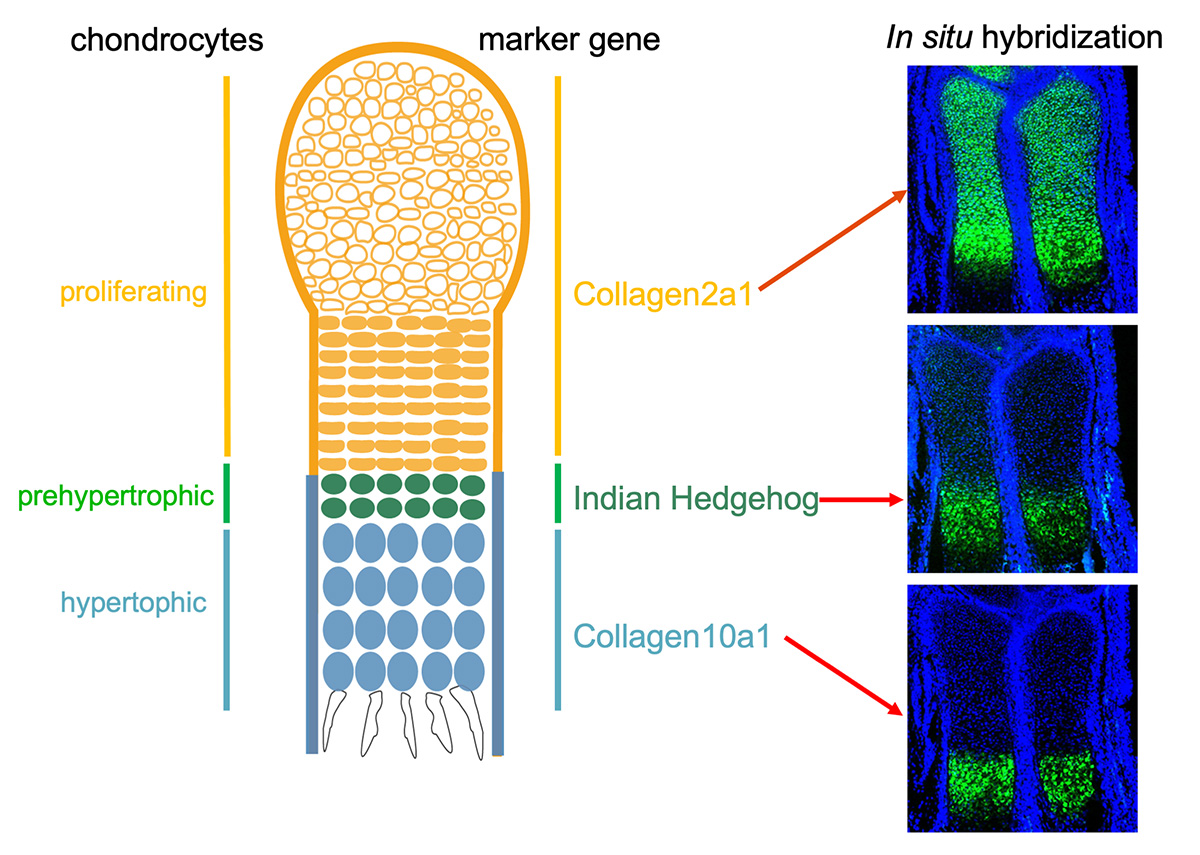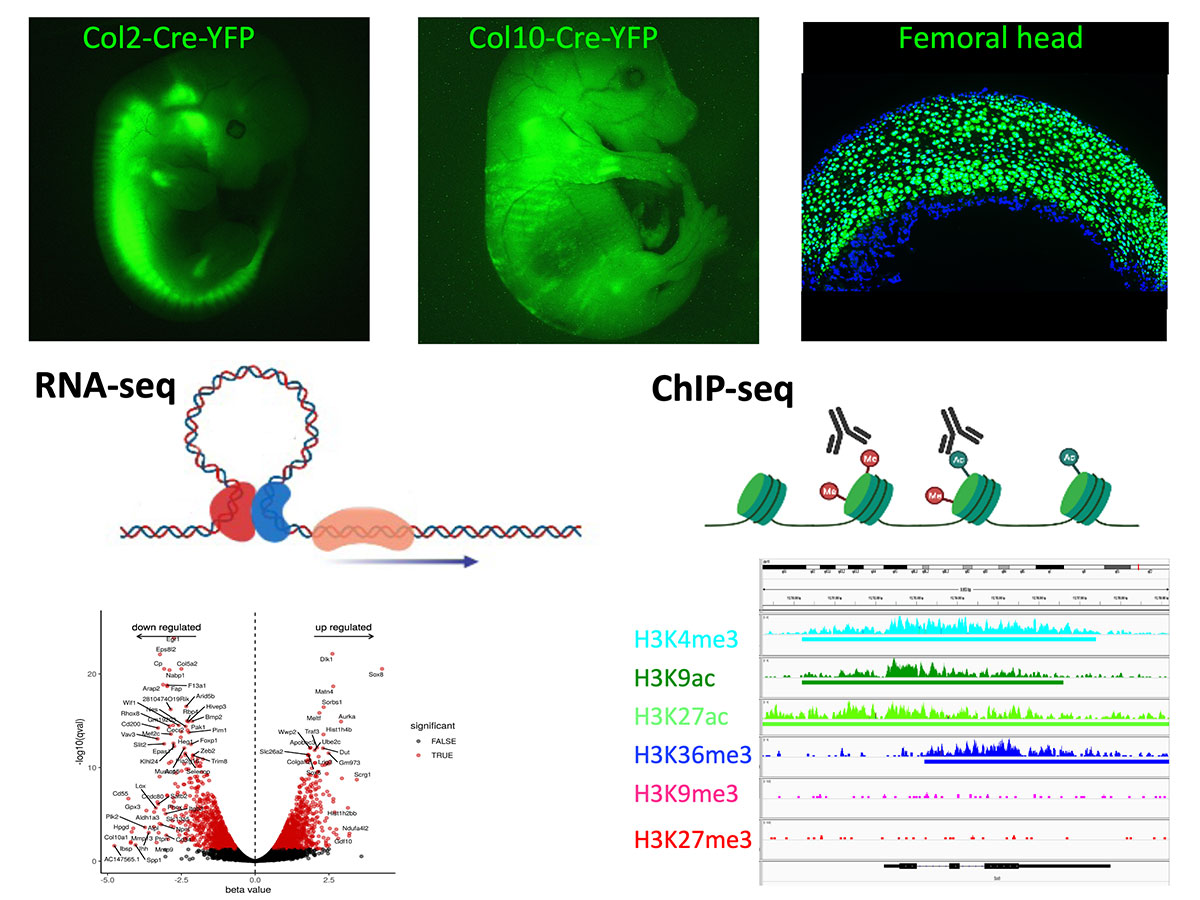Research
Research
During embryonic development, the axial and appendicular skeleton develops by endochondral ossification, a process during which a cartilaginous template is replaced by bone and bone marrow. In the cartilage anlagen proliferating chondrocytes differentiate into mature, hypertrophic chondrocytes, which either transdifferentiate into osteoblast precursors or undergo apoptosis and are replaced by bone. After birth, descendants of the embryonic chondrocytes form the growth plates, which are required for the longitudinal growth of bones until the end of puberty, and the articular cartilage of the joints, which buffers mechanical stress throughout life. Using mouse models and molecular, biochemical and bioinformatics methods our research is currently focused on two main research topics:
Genetic and epigenetic regulation of skeletal malformations
How cell differentiation within the tissue is regulated by the transcriptional machinery is a major question of skeletal biology. In developing bones, the differentiation of distinct chondrocyte subtypes is tightly controlled by the interaction of numerous transcription factors and epigenetic modifiers linking chromatin structure and transcriptional output. Our goal is to decipher how alterations in chromatin structure and transcription factor complexes control cell cycle progression and hypertrophy in the growth plate and the differentiation and maintenance of the articular chondrocytes of the joints. Using mice expressing cell-type specific fluorescent reporter alleles, we can separate distinct chondrocyte subtypes. By coupling next generation sequencing and bioinformatics approaches, we have established epigenetic profiles of proliferating and hypertrophic chondrocytes and correlated changes in these profiles to changes in gene expression (Wuelling *et al.*, 2021). We are currently extending these studies towards the healthy and degenerating articular cartilage and aim to decipher how the interactions of transcription factors and epigenetic modifiers regulate the transitions between cell types.
© A. Vortkamp
Regulation of signaling processes and tissue homeostasis by cartilage matrix composition
In contrast to many other tissues, cartilage is comprised of relatively few cells embedded in an extensive extracellular matrix (ECM). This matrix is mainly composed of collagens providing tensile strength, and proteoglycans conveying a high compressive capacity. We are particularly interested in heparan sulfate (HS)-carrying proteoglycans since HS not only contributes to the mechanical properties of the cartilage matrix but also regulates the distribution and biological activity of signaling factors. Due to the wide range of molecules binding to HS and its complex, tissue specific sulfation pattern, alterations of the HS composition can exert negative and positive effects on chondrocyte differentiation and cartilage homeostasis. For example, loss of HS in cells within the embryonic growth plate leads to osteochondroma formation (Jones *et al.*, 2010), while reduced HS sulfation within the articular cartilage of synovial joints protects against osteoarthritis development (Severmann *et al.*, 2020). We aim to decipher how the level and sulfation pattern of HS and other glycosaminoglycans affect the activity of signaling molecules (Bachvarova *et al.*, 2020) and extracellular proteases, the interaction of chondrocytes with the surrounding ECM, and the transition between different chondrocyte subtypes during embryonic development and in the adult cartilage tissue.


